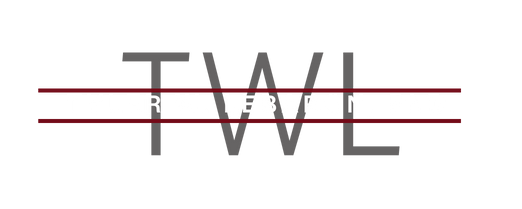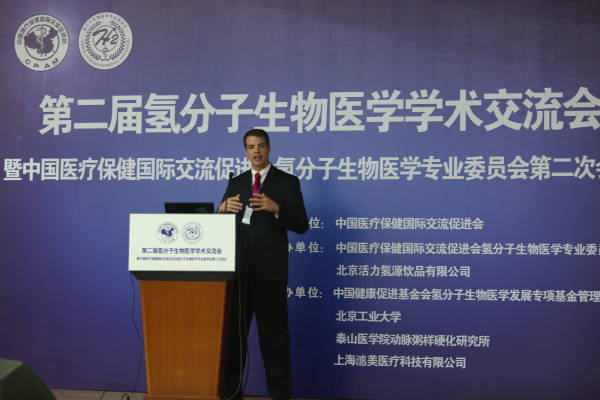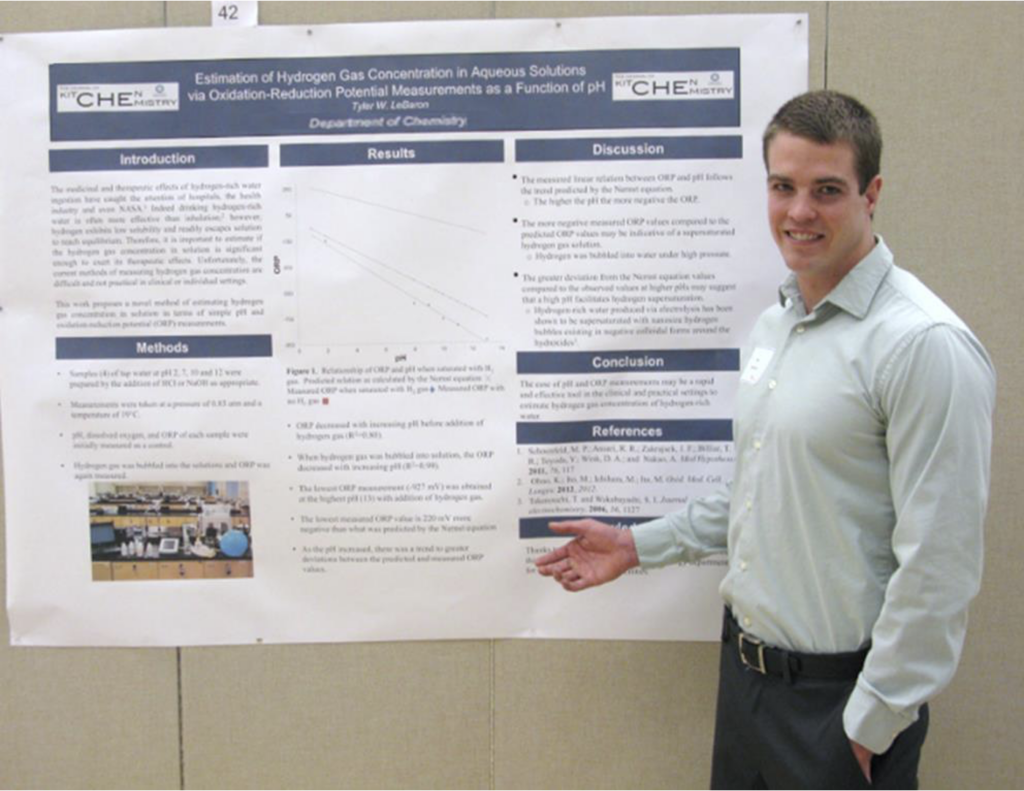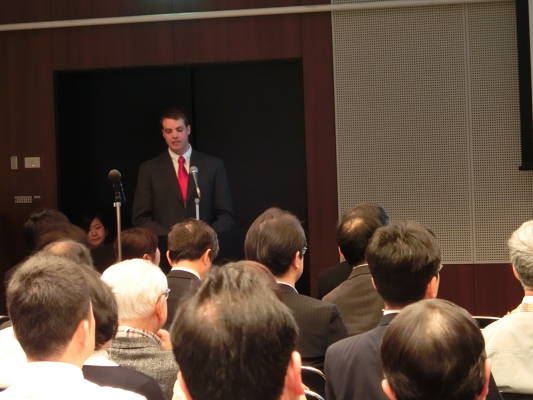THE RESEARCH
Molecular hydrogen – the fuel of the stars
Research / Presentations by Tyler W. LeBaron, MSc., PhD.
- 2025 Yıldız, Fatmanur, Tyler W. LeBaron, and Duried Alwazeer. “A comprehensive review of molecular hydrogen as a novel nutrition therapy in relieving oxidative stress and diseases: Mechanisms and perspectives.” Biochemistry and Biophysics Reports 41 (2025): 101933.
- 2024 Gvozdjáková, Anna, et al. “Perspective Therapy of Mitochondrial Disorders with Molecular Hydrogen.” Translational Mitochondrial Medicine. Cham: Springer Nature Switzerland, 2024. 393-408.
- 2024 Cumaoglu, Mustafa Oguz, et al. “Combating oxidative stress and inflammation in gentamicin-induced nephrotoxicity using hydrogen-rich water.” Tissue and Cell 91 (2024): 102604.
- 2024 Atiakshin, Dmitrii, et al. “The Role of Mast Cells in the Remodeling Effects of Molecular Hydrogen on the Lung Local Tissue Microenvironment under Simulated Pulmonary Hypertension.” International Journal of Molecular Sciences 25.20 (2024): 11010.
- 2024 Alwazeer, Duried, et al. “Recent knowledge on the applications of molecular hydrogen in plant physiology, crop production, and food processing.” Frontiers in Food Science and Technology 4 (2024): 1501046.
- 2024 Alwazeer, Duried, et al. “Molecular hydrogen: a sustainable strategy for agricultural and food production challenges.” Frontiers in Food Science and Technology 4 (2024): 1448148.
- 2024 Baltic, Sonja, et al. “The impact of six-week dihydrogen-pyrroloquinoline quinone supplementation on mitochondrial biomarkers, brain metabolism, and cognition in elderly individuals with mild cognitive impairment: a randomized controlled trial.” The Journal of nutrition, health and aging 28.8 (2024): 100287.
- 2024 Daniil Kolesnikov, Alexandra Kozlova, Andrey Aleхandrov, Nikolai Kalmykov, Pavel Treshkov, Tyler W. LeBaron, Oleg Medvedev. Applying ChatGPT to writing scientific articles on the use of telemedicine: Opportunities and limitations. Artificial Intelligence in Health 2024, 1(3), 53–63. https://doi.org/10.36922/aih.2592
- 2024 Baltic, Sonja, et al. “Medium-Term Intake of Dihydrogen and Pyrroloquinoline Quinone Affects Brain Metabolism and Cognition in Elderly With Mild Cognitive Impairment.” Current Developments in Nutrition 8 (2024).
- 2024 Misnikova IV, Kovaleva YA, Shokur SY, et al. Hydrogen and Methane Production in Response to Different Types of Dietary Fiber and Its Relationship to Postprandial Glucose Levels in Patients with Type 2 Diabetes and Normoglycemic Subjects. Preprints.org; 2024. DOI: 10.20944/preprints202406.0385.v1
- 2024 Artamonov, M. Y., LeBaron, T. W., Pyatakovich, F. A., & Minenko, I. A. (2024). Mesenchymal Stem Cell Priming: Potential Benefits of Administration of Molecular Hydrogen. Pharmaceuticals, 17(4), 469.
- 2024 Artamonov, M. Y., LeBaron, T. W., Pyatakovich, F. A., & Minenko, I. A. (2024). Molecular hydrogen and its effect on wound healing and tissue regeneration. IntechOpen. https://doi.org/10.5772/intechopen.1004921
- 2024 Aker, M. N., Gönenç, İ. M., Çalışıcı, D., Bulut, M., Alwazeer, D., & LeBaron, T. W. (2024). The effect of hydrogen-rich water consumption on premenstrual symptoms and quality of life: a randomized controlled trial. BMC Women’s Health (Online), 24(1). https://doi.org/10.1186/s12905-024-03029-8
- 2024 LeBaron, T. W., Sharpe, R., Pyatakovich, F. A., & Artamonov, M. Y. (2024). Hydrogen: From stars to fuel to medicine. In Advances in biochemistry in health and disease (Online) (pp. 1–20). https://doi.org/10.1007/978-3-031-47375-3_1
- 2024 Artamonov, M. Y., LeBaron, T. W., Соков, Е. Л., Корнилова, Л. Е., Pyatakovich, F. A., & Minenko, I. А. (2024). Intraosseous Administration of Molecular Hydrogen: A Novel Technique—From Molecular Effects to Tissue Regeneration. In Advances in biochemistry in health and disease (pp. 417–433). https://doi.org/10.1007/978-3-031-47375-3_24
- 2024 Hancock, J. T., May, J., LeBaron, T. W., Punampalam, R., & Russell, G. (2024). An exploration of the direct biological targets of molecular hydrogen. In Advances in biochemistry in health and disease (Online) (pp. 21–38). https://doi.org/10.1007/978-3-031-47375-3_2
- 2024 Kura, B., Bacova, B. S., Barančı́K, M., Sýkora, M., Okruhlicová, Ľ., Tribulová, N., Bolli, R., Kaločayová, B., LeBaron, T. W., Andelová, K., & Slezák, J. (2024). Perioperative Mitigation of Oxidative Stress with Molecular Hydrogen During Simulated Heart Transplantation in Pigs. In Advances in biochemistry in health and disease (Online) (pp. 179–193). https://doi.org/10.1007/978-3-031-47375-3_12
- 2024 Vincent, S. R., Madani, M. M., Dikeman, D., Golden, K., Crocker, N. A., Jackson, C. V., Wimmer, S., Dover, Tucker, A. M., Ghiani, C. A., Colwell, C. S., LeBaron, T. W., Tarnava, A., & Paul, K. N. (2023). Hydrogen-rich water improves sleep consolidation and enhances forebrain neuronal activation in mice. Sleep Advances. https://doi.org/10.1093/sleepadvances/zpad057
- 2024 Hancock JT, LeBaron TW, May J, Thomas A, Zulfiqar F, Russell G. Molecular hydrogen as a beneficial postharvest treatment. InOxygen, Nitrogen and Sulfur Species in Post-Harvest Physiology of Horticultural Crops 2024 Jan 1 (pp. 303-318). Academic Press.
- 2023 Hancock JT, LeBaron TW, May J, Thomas A, Russell G. Alleviation of Plant Stress by Molecular Hydrogen. InGasotransmitters Signaling in Plants under Challenging Environment 2023 Nov 26 (pp. 101-120). Cham: Springer International Publishing.
- 2023 Kuropatkina T, Atiakshin D, Sychev F, Artemieva M, Samoilenko T, Gerasimova O, Shishkina V, Gufranov K, Medvedeva N, LeBaron TW, Medvedev O. Hydrogen Inhalation Reduces Lung Inflammation and Blood Pressure in the Experimental Model of Pulmonary Hypertension in Rats. Biomedicines. 2023 Nov 25;11(12):3141.
- 2023 Taheri, M., Saad, H. B., Washif, J. A., Reynoso-Sánchez, L. F., Mirmoezzi, M., Youzbashi, L., Trabelsi, K., Moshtagh, M., Helú, H. M., Mataruna-Dos-Santos, L. J., Seghatoleslami, A., Torabi, F., Soylu, Y., Kurt, C., Vancini, R. L., Delkash, S., Rezaei, M. S., Ashouri, M., Tahira, S., LeBaron TW . . . Irandoust, K. (2023). Comparative Study of the Long-Term Impact of the COVID-19 Pandemic on Mental Health and Nutritional Practices Among International Elite and Sub-Elite Athletes: A Sample of 1420 Participants from 14 Countries. Sports Medicine – Open, 9(1). https://doi.org/10.1186/s40798-023-00653-w
- 2023 Nazari SE, Tarnava A, Khalili-Tanha N, Darroudi M, Khalili-Tanha G, Avan A, Khazaei M, LeBaron TW. Therapeutic Potential of Hydrogen-Rich Water on Muscle Atrophy Caused by Immobilization in a Mouse Model. Pharmaceuticals. 2023 Oct 10;16(10):1436.
- 2023 Singh RB, Tarnava A, Fatima G, Fedacko J, Mojto V, LeBaron TW. Can Hydrogen Water Enhance Oxygen Saturation in Patients with Chronic Lung Disease? A Non-Randomized, Observational Pilot Study. Diseases. 2023 Sep 26;11(4):127.
- 2023 Kalocayova B, Kura B, Vlkovicova J, Snurikova D, Vrbjar N, Frimmel K, Hudec V, Ondrusek M, Gasparovic I, Sramaty R, Luptak J, LeBaron TW . . . Molecular hydrogen: prospective treatment strategy of kidney damage after cardiac surgery. Canadian Journal of Physiology and Pharmacology. 2023 Jul 18;101(10):502-8.
- 2023 Bloomer RJ, Zhang Y, Shirazi JY, Okegbe C, Pence J, Martin K, Q. Timmcke J, LeBaron TW. Alpha Hope, via Molecular Hydrogen and Pyrroloquinoline Quinone, Dose-Dependently Increases Nrf2 and PGC-1α Levels in C2C12 Myoblasts. Processes. 2023 Jul 5;11(7):2011.
- 2023 Taheri M, Irandoust K, Reynoso-Sánchez LF, Muñoz-Helú H, Cruz-Morales KN, Torres-Ramírez R, Mirmoezzi M, Youzbashi L, Mirakhori F, Dergaa I, Vancini RL, LeBaron TW. . . Effects of home confinement on physical activity, nutrition, and sleep quality during the COVID-19 outbreak in amateur and elite athletes. Frontiers in nutrition. 2023 Apr 13;10:1143340.
- 2023 Kayabaş M, Şahin L, Makav M, Alwazeer D, Aras L, Yiğit S, LeBaron TW. Protective Effect of Hydrogen-Rich Saline on Spinal Cord Damage in Rats. Pharmaceuticals. 2023 Apr 1;16(4):527.
- 2023 LeBaron TW, Ohno K, Hancock JT. The On/Off History of Hydrogen in Medicine: Will the Interest Persist This Time Around?. Oxygen. 2023 Mar 14;3(1):143-62.
- 2023 Kura B, Szantova M, LeBaron TW, Mojto V, Barancik M, Bacova BS, Kalocayova B, Sykora M, Okruhlicova L, Tribulova N, Gvozdjakova A. Beneficial Effects of Hydrogen Water on Subjects with NAFLD. Research Developments in Medicine and Medical Science Vol. 4. 2023 Mar 4:117-35.
- 2023 Artamonov MY, Martusevich AK, Pyatakovich FA, Minenko IA, Dlin SV, LeBaron TW. Molecular Hydrogen: From Molecular Effects to Stem Cells Management and Tissue Regeneration. Antioxidants. 2023 Mar 3;12(3):636.
- 2023 Hancock JT, LeBaron TW. The Early History of Hydrogen and Other Gases in Respiration and Biological Systems: Revisiting Beddoes, Cavallo, and Davy. Oxygen. 2023 Feb 28;3(1):102-19.
- 2023 Taylor JE, Rowley A, Graffius J, Pearce D, Woodrum K, LeBaron T. Ingestible Oxygen Supplementation does NOT Impact Maximal Aerobic Performance Measures. InInternational Journal of Exercise Science: Conference Proceedings 2023 (Vol. 14, No. 3, p. 18).
- 2023 Argueta NN, Rowley A, Pearce D, Graffius J, Woodrum K, Lebaron T, Taylor JE. The Effects of Ox66TM Supplementation on Ventilatory Threshold Performance Measures. InInternational Journal of Exercise Science: Conference Proceedings 2023 (Vol. 14, No. 3, p. 38).
- 2023 Alwazeer D, ELNASANELKASIM MA, Çiğdem A, Engin T, LeBaron TW. Incorporation of molecular hydrogen into solvents increases the extraction efficiency of phenolics, flavonoids, anthocyanins, and antioxidants: the case of lemon peels. Frontiers in Sustainable Food Systems. 2023;7:1223027.
- 2023 Zhang X, Xie F, Zhang Z, Adzavon YM, Su Z, Zhao Q, LeBaron TW, Li Q, Lyu B, Liu G, Liu M. Hydrogen evolution and absorption phenomena in the plasma membrane of Vigna radiata and Capsicum annuum. Journal of Plant Growth Regulation. 2023 Jan;42(1):249-59.
- 2022 LeBaron TW, Sharpe R, Ohno K. Electrolyzed–Reduced Water: Review I. Molecular Hydrogen Is the Exclusive Agent Responsible for the Therapeutic Effects. International Journal of Molecular Sciences. 2022 Nov 25;23(23):14750.
- 2022 LeBaron TW, Sharpe R, Ohno K. Electrolyzed–Reduced Water: Review II: Safety Concerns and Effectiveness as a Source of Hydrogen Water. International Journal of Molecular Sciences. 2022 Nov 22;23(23):14508.
- 2022 LeBaron TW, Sharpe R. ORP should not be used to estimate or compare concentrations of aqueous H2: An in silico analysis and narrative synopsis. Frontiers in Food Science and Technology. 2022 Oct 7;2:1007001.
- 2022 Kura B, Szantova M, LeBaron TW, Mojto V, Barancik M, Szeiffova Bacova B, Kalocayova B, Sykora M, Okruhlicova L, Tribulova N, Gvozdjakova A. Biological effects of hydrogen water on subjects with NAFLD: A randomized, placebo-controlled trial. Antioxidants. 2022 Sep 28;11(10):1935.
- 2022 LeBaron TW, Singh RB, Fatima G, Kartikey K, Sharma JP, Ostojic SM, Gvozdjakova A, Kura B, Noda M, Mojto V, Niaz MA. The Influence of High-Concentration Hydrogen-Rich Water for 24-Week on Body Composition, Blood Lipid Profiles, and Inflammatory Biomarkers in Men and Women with Metabolic Syndrome: A Randomized Controlled Trial. BP International 2022 (pp 1-16).
- 2022 Tarnava A, LeBaron TW. Molecular hydrogen as a nutraceutical for extending the health span. InFunctional Foods and Nutraceuticals in Metabolic and Non-Communicable Diseases 2022 Jan 1 (pp. 757-770). Academic Press.
- 2022 Asgharzadeh F, Tarnava A, Mostafapour A, Khazaei M, LeBaron TW. Hydrogen-rich water exerts anti-tumor effects comparable to 5-fluorouracil in a colorectal cancer xenograft model. World Journal of Gastrointestinal Oncology. 2022 Jan 1;14(1):242.
- 2022 LeBaron TW, Singh RB, Fatima G, Kartikey K, Sharma JP, Ostojic SM, Gvozdjakova A, Kura B, Noda M, Mojto V, Niaz MA. Evaluating the Effects of 24-Week Intervention with High-Concentration Hydrogen-Rich Water on Body Composition, Blood Lipid Profiles and Inflammation Biomarkers in Individuals with Metabolic Syndrome. New Horizons in Medicine and Medical Research Vol. 9. 2022 May 18:158-70.
- 2022 Hasegawa T, Ito M, Hasegawa S, Teranishi M, Takeda K, Negishi S, Nishiwaki H, Takeda JI, LeBaron TW, Ohno K. Molecular Hydrogen Enhances Proliferation of Cancer Cells That Exhibit Potent Mitochondrial Unfolded Protein Response. International journal of molecular sciences. 2022 Mar 7;23(5):2888.
- 2021 Singh RB, Ghazi Halabi GF, Rai RH, Tarnava AT, LeBaron TW*. Molecular hydrogen as an adjuvant therapy may be associated with increased oxygen saturation and improved exercise tolerance in a COVID‐19 patient. Clinical Case Reports. 2021 Nov;9(11).
- 2021 Alwazeer D., Liu FF., WY Xiao., LeBaron TW*. Combating Oxidative Stress and Inflammation in COVID-19 by Molecular Hydrogen Therapy: Mechanisms and Perspectives. Oxidative Medicine and Cellular Longevity 2021
- 2021 LeBaron TW., Shigeo Ohta. Reply to “Discussion: Drinking hydrogen water enhances endurance and relieves psychometric fatigue: a randomized, double-blind, placebo-controlled study”1 Can. J. Physiology and Pharmacology. 99(10), pp.1114-1115.
- 2021 LeBaron TW*., Kharman J. Michael L. McCullough. An H2-infused, nitric oxide-producing functional beverage as a neuroprotective agent for TBIs and concussions. J. Integrative Neuroscience 20, no. 3 (2021): 667-676.
- 2021 Hancock, J.T., LeBaron, TW., May, J., Thomas, A., Russell, G. Molecular Hydrogen: a new treatment for plants in the UK? New Trends in UK Plant Science Plants 10, no. 11 (2021): 2270.
- 2021 LeBaron TW., Asgharzadeh F., Khazei M., Kura B., Tarnava A., Slezak J., Molecular hydrogen is comparable to sulfasalazine as a treatment for DSS-induced ulcerative colitis in mice. EXCLI Journal, 20:1106-1117
- 2021 LeBaron TW*., Kharman J. Michael L. McCullough. Effects of an H2-infused, nitric oxide-producing functional beverage on exercise and cognitive performance. Journal of Science and Medicine, 3(2)p79
- 2021 Hancock, J.T., LeBaron, T.W. and Russell, G., 2021. Molecular Hydrogen: Redox Reactions and Possible Biological Interactions. Reactive Oxygen Species, 11, pp.m17-m25.
- 2020 Barancik A., Kura B., LeBaron TW., Bolli R., Buday J., Slezak J. Molecular mechanisms and cellular systems associated with the medical effects of molecular hydrogen. Antioxidants, 9(12), p.1281.
- 2020 Slezak J, Kura B, LeBaron TW, Singal PK, Buday J, Barancik M. Oxidative stress and pathways of molecular hydrogen effects in medicine. Current Pharmaceutical Design. 2020. 26, 1-16
- 2020 T.W. LeBaron, M.L. McCullough, K.H. Ruppman Sr. 2020 A novel functional beverage for COVID-19 and other conditions: hypothesis and preliminary data, increased blood flow, and wound healing J Transl Sci, 6 (2020), pp. 1-6
- 2020 LeBaron, T.W., Singh, R.B., Fatima, G., Kartikey, K., Sharma, J.P., Ostojic, S.M., Gvozdjakova, A., Kura, B., Noda, M., Mojto, V. and Niaz, M.A., 2020. The Effects of 24-Week, High-Concentration Hydrogen-Rich Water on Body Composition, Blood Lipid Profiles and Inflammation Biomarkers in Men and Women with Metabolic Syndrome: A Randomized Controlled Trial. Diabetes, Metabolic Syndrome and Obesity: Targets and Therapy, 13, p.889.
- 2020 Zhang X, Zhang Z, Su Z, Zhao Q, LeBaron TW, Li Q, Lyu B, Adzavon YM, Liu G, Liu M, Xie F. Hydrogen evolution and absorption phenomena in plasma membrane of higher plants. bioRxiv. 2020 Jan 1.
- Korovljev, D., Stajer, V., Ostojic, J., LeBaron, T.W. and Ostojic, S.M., 2019. Hydrogen-rich water reduces liver fat accumulation and improves liver enzyme profiles in patients with non-alcoholic fatty liver disease: a randomized controlled pilot trial. Clinics and Research in Hepatology and Gastroenterology, 43(6), pp.688-693.
- 2019 LeBaron, T.W., Kura, B., Kalocayova, B., Tribulova, N. and Slezak, J., 2019. A new approach for the prevention and treatment of cardiovascular disorders. Molecular hydrogen significantly reduces the effects of oxidative stress. Molecules, 24(11), p.2076.
- 2019 Mikami, T., Tano, K., Lee, H., Lee, H., Park, J., Ohta, F., LeBaron, T.W. and Ohta, S., 2019. Drinking hydrogen water enhances endurance and relieves psychometric fatigue: a randomized, double-blind, placebo-controlled study. Canadian journal of physiology and pharmacology, 97(9), pp.857-862
- 2019 LeBaron TW, Laher, I., Kura, B., & Slezak, J. Hydrogen gas: from clinical medicine to an emerging ergogenic molecule for sports athletes. Canadian journal of physiology and pharmacology, 2019; 97(9), pp.857-862
- 2019 Korovljev, D., Stajer, V., Ostojic, J., LeBaron, T.W. & Ostojic, S.M., 2019. Hydrogen-rich water reduces liver fat accumulation and improves liver enzyme profiles in patients with non-alcoholic fatty liver disease: a randomized controlled pilot trial. Clinics and research in hepatology and gastroenterology. 2019 April (in press)
- 2019 LeBaron TW, Larson A, Ohta S, Mikami T, Barlow J, Bulloch J, Debeliso M. Acute Supplementation with Molecular Hydrogen Benefits Submaximal Exercise Indices. Randomized, Double-Blinded, Placebo-Controlled Crossover Pilot Study. J. Lifestyle Medicine 2019; 9:36-43
- 2019 Kura B, Kalocayova B, LeBaron TW, Frimmel K, Buday J, Surovy J, Slezak J. Regulation of microRNAs by molecular hydrogen contributes to the prevention of radiation-induced damage in the rat myocardium. Molecular and Cellular Biochemistry. 2019 Mar 4:1-2.
- 2018 Kura B, Bagchi AK, Singal PK, Barancik M, LeBaron TW, Valachova K, Soltes L, Slezak J. Molecular hydrogen (H2): Potential in mitigating oxidative stress-induced cardiotoxicity. Canadian journal of physiology and pharmacology. 2018 Dec 13(ja).
- 2018 Jackson K, Dressler N, Ben-Shushan RS, Meerson A, LeBaron TW, Tamir S. Effects of alkaline-electrolyzed and hydrogen-rich water, in a high-fat-diet nonalcoholic fatty liver disease mouse model. World Journal of Gastroenterology. 2018 Dec 7;24(45):5095.
- 2018 Tyler W. LeBaron; Special Lecture: “Therapeutic and clinical effects of hydrogen gas” * Japanese-English translation, presented at medical-dental conference in Tokyo Japan (Dec. 15, 2018).
- 2018 Guo Q, Yin X, Qiao M, Jia Y, Chen D, Shao J, LeBaron TW, Gao Y, Jia B, Shi H. Hydrogen-rich water ameliorates autistic-like behavioral abnormalities in valproic acid-treated adolescent mice offspring. Frontiers in behavioral neuroscience. 2018;12:170.
- 2018 Tyler W. LeBaron; “Clinical effects of molecular hydrogen on neurodegenerative diseases” presented at Academy of Comprehensive Integrative Medicine. Orlando, Florida (Nov. 10th, 2015)
- 2018 Hirayama M, Ito M, Minato T, Yoritaka A, LeBaron TW, Ohno K. Inhalation of hydrogen gas elevates urinary 8-hydroxy-2′-deoxyguanine in Parkinson’s disease. Medical gas research. 2018 Oct;8(4):144.
- 2018 Tyler W. LeBaron; “Inhalation of hydrogen gas mildly elevates oxidative stress in Parkinson’s disease. Hormetic or toxic?” presented at first International conference on Hydrogen Medicine and Biology Beijing China Oct. 13, 2018.
- 2018 Tyler W. LeBaron; “Beneficial effects of hydrogen gas- involvement of miRNAs, Co-Q10 and ATP production presented at the International Hydrogen Industry Development Forum, organized by International Molecular Hydrogen Association (IMHA) in Guangzhou, China (Sept. 15, 2018)
- 2018 Shang L, Xie F, Li J, Zhang Y, Liu M, Zhao P, Ma X, LeBaron TW. Therapeutic potential of molecular hydrogen in ovarian cancer. Translational Cancer Research. 2018 Aug 14;7(4):988-95.
- 2018 Tyler W. LeBaron; “Practical Applications and Clinical Uses for Molecular Hydrogen” presented at SOPMED Medical Conference in Colorado Springs, Colorado (June 22nd, 2018)
- 2018 Tyler W. LeBaron “Hydrogen: a therapeutic molecule for cardio and cerebrovascular diseases” presented at the 5th European Section meeting of the International Academy of Cardiovascular Sciences (IACS-ES) in Bratislava, Slovakia (May 24, 2018).
- 2018 M. Liang; Y. Du; W. Li; X. Yin; N. Yang; A. Qie; T. W. LeBaron; J. Zhang; H. Chen; H. Shi. “SuHeXiang essential oil inhalation produces antidepressant- and anxiolytic-like effects in adult mice” Biological and Pharmaceutical Bulletin. 2018 May 9:b18-00082
- 2018 Tyler W. LeBaron & Mark Rosenberg “Clinical Applications for Molecular Hydrogen” presented at the Academy of Anti-Aging Medicine (A4M) in Hollywood, Florida (April13, 2018).
- 2018 Tyler W. LeBaron; “Hydrogen: a biologically-regenerative molecule with clinical applications” presented at the Academy of Regenerative Practices in Boca Raton, Florida (March 3, 2018).
- 2017 Tyler W. LeBaron; “Is Hydrogen an Antioxidant? Definitions and Explanations” presented at the 4th Symposium of CPAM Chinese Hydrogen Biomedical Association (SCHBA) in Foshan, China (Dec. 6, 2017).
- 2017 Tyler W. LeBaron; “Hydrogen: an emerging medical gas with clinical significance” presented at 22nd International Conference of FFC-10th International Symposium of ASFFBC at Harvard Medical School, Boston MA, USA. (Sept. 23, 2017).
- 2017 Tyler W. LeBaron; “Molecular Hydrogen: from basic and clinical research to sports performance; an overview of the data from recent human studies” presented at the International Hydrogen Industry Development Forum, organized by International Molecular Hydrogen Association (IMHA) in Guangzhou, China (Sept. 14, 2017)
- 2017 Gao, Q., Song, H., Wang, X.T., Liang, Y., Xi, Y.J., Gao, Y., Guo, Q.J., LeBaron, T., Luo, Y.X., Li, S.C. and Yin, X. Molecular hydrogen increases resilience to stress in mice. Nature publication: Scientific Reports, 7 (2017)
- 2017 Tyler W. LeBaron; “Hydrogen: signal modulator for disease and inflammation” presented at SOPMED Medical Conference in Colorado Springs, Colorado (June 16th, 2017)
- 2017 Tyler W. LeBaron; “Hydrogen: A Therapeutic Medical Gas” presented at conference and medical group in Jakarta Indonesia (March 8, 2017)
- 2016 Tyler W. LeBaron; “Hydrogen Revolution in Industry and Medical Biology” presented at the Korea International Symposium on Hydrogen in Seoul Korea (November 25, 2016)
- 2016 Tyler W. LeBaron; “Hydrogen: A Small Molecule with Great Clinical Significance” presented at ILADS Annual Scientific Medical Conference on Lyme Disease in Philadelphia, PA (November 5, 2016)
- 2016 Tyler W. LeBaron; “Hydrogen: an Ageless Molecule of an Aging Society; a Scientific Basis for the Amelioration of Inflammation, Oxidation, and Cellular Degeneration” presented at the 3rd Symposium of Chinese Hydrogen Biomedical Association (SCHBA) in Taian city (September 25, 2016)
- 2016 Tyler W. LeBaron; “Hydrogen: an explosive molecule with explosive therapeutic effects” presented at the International Hydrogen Industry Development Forum, organized by International Molecular Hydrogen Association (IMHA) in Guangzhou, China (Sept. 9, 2016)
- 2016 Tyler W. LeBaron; “Hydrogen: A Therapeutic Molecule with Ergogenic Potential” presented at the 6th Hydrogen Medicine Conference in Shenyang, China (July 24, 2016)
- 2016 Tyler W. LeBaron; “Hidrógeno molecular: La revolución de Salud y el Bienestar, presented at Global Conference in Querétaro Mexico (July 12th, 2016)
- 2016 Tyler W. LeBaron; “Hydrogen Therapy: ‘Primum non nocere’ a revolution in health and wellness” presented at SOPMED Medical Conference in Salt Lake City, Utah (June 17th, 2016)
- 2016 Tyler W. LeBaron; “Hydrogen: A Unique and Superior Antioxidant Molecule for Athletes” presented at the International Molecular Hydrogen Symposium in Shanghai (March 20, 2016)
- 2015 Tyler LeBaron; “Molecular Hydrogen: therapeutic and medical applications” presented at Age Management Medical Group. Las Vegas, Nevada (Dec. 8th, 2015).
- 2015 Tyler LeBaron; “Molecular Hydrogen: therapeutic potential for neurodegenerative diseases” presented at Academy of Comprehensive Integrative Medicine. Orlando, Florida (Oct. 24th, 2015)
- 2015 Tyler LeBaron; “Molecular Hydrogen: therapeutic and medical applications” presented at FIME Medical Expo. Miami, Florida. (Aug. 7th, 2015).
- 2015 Tyler W. LeBaron; “Molecular Hydrogen: an evolutionary and molecular explanation for its ubiquitous biological effects on eukaryotes” presented at the 2nd Molecular Hydrogen Biomedical Symposium. CPMA Chinese Hydrogen Biomedical Association(June 28, 2015)
- 2015 Tyler W. LeBaron; “Molecular Hydrogen in America: research, products, media, and awareness” presented at 5thSymposium of Medical Molecular Hydrogen at Nagoya University (March 22, 2015) http://www.med.nagoya-u.ac.jp/neurogenetics/mmh2015/sub_program.html
- 2014 Meyers, Jonathan K., Tyler W. LeBaron, and David C. Collins. “The Journal of Kitchen Chemistry: A Tool for Instructing the Preparation of a Chemistry Journal Article.” Journal of Chemical Education. http://pubs.acs.org/doi/abs/10.1021/ed400671y
- 2013 Tyler W. LeBaron; “Changes in Oxidation-Reduction Potential of Aqueous Solutions as a Function of pH and Hydrogen Gas Concentration” The Journal of Kitchen Chemistry 2013. 1. P.12
- 2013 Tyler W. LeBaron; “Estimation of Hydrogen gas Concentration in Aqueous Solutions via Oxidation-Reduction Potential Measurements as a Function of pH” presented at BYU-I Research and Creative Works Conference, April 4, 2013. http://beta.byui.edu/Documents/instructional_development/rcw/2013%20Winter/RCW%20Winter%202013%20%282%29.pdf
- 2012 Tyler W. LeBaron; Determination of nitrate reduction in the presence of ascorbic acid at facilitative pH (Personal project—preliminary results and specific review presented in 2012).
- 2012 Tyler W. LeBaron; “Testosterone Booster Recommendation Report” (A critical review of purported supplements) http://scholar.google.com/scholar?q=%22Testosterone+Booster+Recommendation+Report%22&btnG=&hl=en&as_sdt=0%2C13
- 2011 Tyler W. LeBaron; “Creatine recommendation report” (Review of current work and elucidation of creatine stability with respect to various supplements http://scholar.google.com/scholar?q=%22creatine+recommendation+report%22+&btnG=&hl=en&as_sdt=0%2C13
- 2010 Tyler W. LeBaron; “Functional Water for the Prevention and Treatment of Disease (A comprehensive literature review)”, presented at BYU-I Research and Creative Works Conference, December 9, 2010. http://emp.byui.edu/PyperB/2010FallUGRC.htm
- 2010 Tyler W. LeBaron “Alkaline Reduced (electrolyzed) Water enhances time to exhaustion during lactate threshold running”, presented at BYU-I Research and Creative Works Conference, Mar 25, 2010 http://emp.byui.edu/PyperB/2010byuiugrc.htm




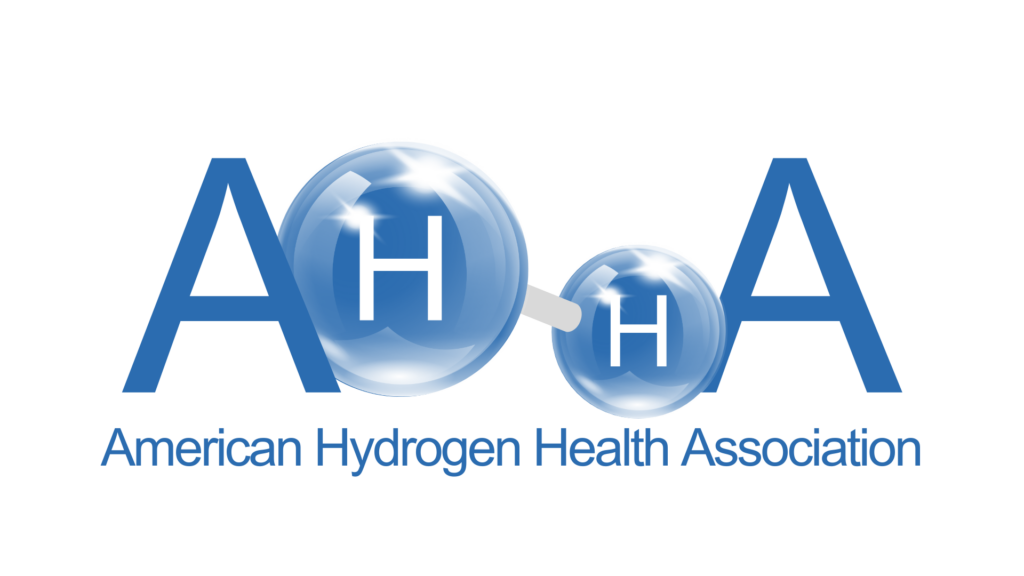
Peer-review
THE PEER-REVIEW PROCESS
Before scientific research is published, it goes through a process called peer review. This means the research is carefully evaluated by other experts in the same field to check for accuracy, quality, and validity.
Here’s How It Works:
1. Submission
A scientist submits their research to a scientific journal.
2. Editorial Check
The journal’s editor makes sure the research fits the journal’s focus and meets basic standards.
3. Expert Review
The paper is sent to independent experts (called “peers”) who review the study. They look at the methods, data, and conclusions to ensure everything is sound and supported.
4. Feedback & Revisions
Reviewers may request changes, ask questions, or reject the paper if it doesn’t meet scientific standards. The author can revise and resubmit.
5. Publication
If the paper passes review, it gets published in the journal. This helps ensure that published research is credible, reliable, and scientifically valid.
Being published in a high-quality, peer-reviewed journal is a significant accomplishment. It means the research has undergone rigorous evaluation by independent experts in the field and met the highest standards of scientific credibility, accuracy, and relevance. This process ensures that only well-designed, meaningful studies are shared with the scientific community and the public—making publication a strong mark of trust and excellence.
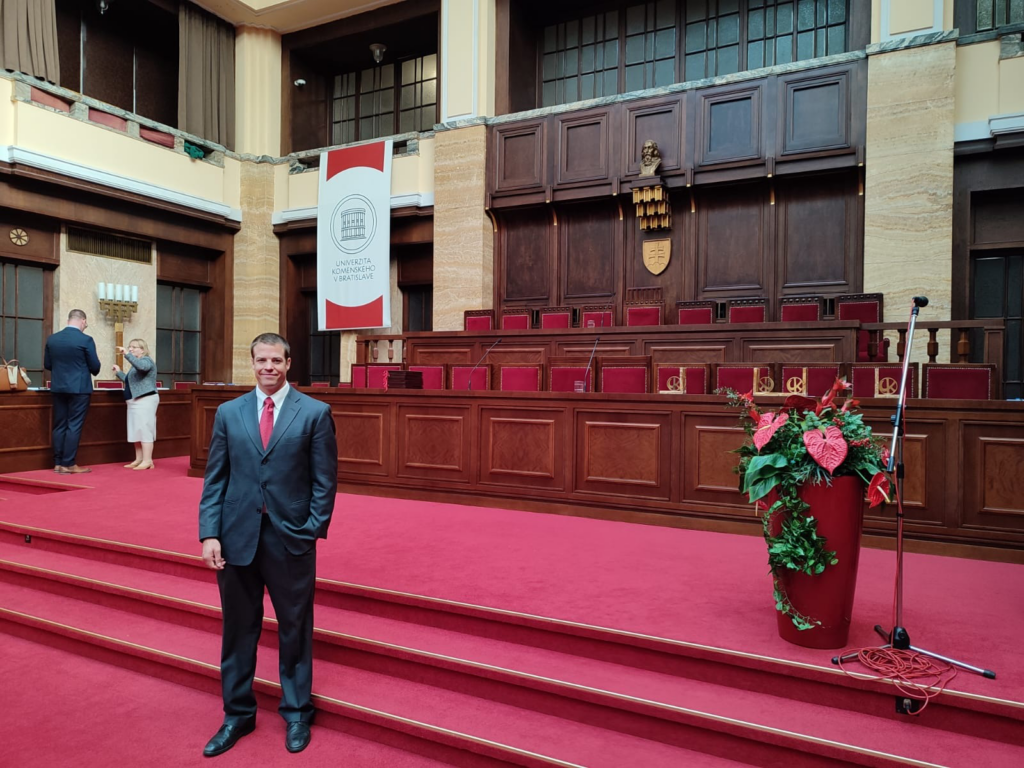

Here is the research that Tyler has completed (updated February 2025)
Research / Presentations by Tyler W. LeBaron, MSc., PhD.
- 2025 Yıldız, Fatmanur, Tyler W. LeBaron, and Duried Alwazeer. “A comprehensive review of molecular hydrogen as a novel nutrition therapy in relieving oxidative stress and diseases: Mechanisms and perspectives.” Biochemistry and Biophysics Reports 41 (2025): 101933.
- 2024 Gvozdjáková, Anna, et al. “Perspective Therapy of Mitochondrial Disorders with Molecular Hydrogen.” Translational Mitochondrial Medicine. Cham: Springer Nature Switzerland, 2024. 393-408.
- 2024 Cumaoglu, Mustafa Oguz, et al. “Combating oxidative stress and inflammation in gentamicin-induced nephrotoxicity using hydrogen-rich water.” Tissue and Cell 91 (2024): 102604.
- 2024 Atiakshin, Dmitrii, et al. “The Role of Mast Cells in the Remodeling Effects of Molecular Hydrogen on the Lung Local Tissue Microenvironment under Simulated Pulmonary Hypertension.” International Journal of Molecular Sciences 25.20 (2024): 11010.
- 2024 Alwazeer, Duried, et al. “Recent knowledge on the applications of molecular hydrogen in plant physiology, crop production, and food processing.” Frontiers in Food Science and Technology 4 (2024): 1501046.
- 2024 Alwazeer, Duried, et al. “Molecular hydrogen: a sustainable strategy for agricultural and food production challenges.” Frontiers in Food Science and Technology 4 (2024): 1448148.
- 2024 Baltic, Sonja, et al. “The impact of six-week dihydrogen-pyrroloquinoline quinone supplementation on mitochondrial biomarkers, brain metabolism, and cognition in elderly individuals with mild cognitive impairment: a randomized controlled trial.” The Journal of nutrition, health and aging 28.8 (2024): 100287.
- 2024 Daniil Kolesnikov, Alexandra Kozlova, Andrey Aleхandrov, Nikolai Kalmykov, Pavel Treshkov, Tyler W. LeBaron, Oleg Medvedev. Applying ChatGPT to writing scientific articles on the use of telemedicine: Opportunities and limitations. Artificial Intelligence in Health 2024, 1(3), 53–63. https://doi.org/10.36922/aih.2592
- 2024 Baltic, Sonja, et al. “Medium-Term Intake of Dihydrogen and Pyrroloquinoline Quinone Affects Brain Metabolism and Cognition in Elderly With Mild Cognitive Impairment.” Current Developments in Nutrition 8 (2024).
- 2024 Misnikova IV, Kovaleva YA, Shokur SY, et al. Hydrogen and Methane Production in Response to Different Types of Dietary Fiber and Its Relationship to Postprandial Glucose Levels in Patients with Type 2 Diabetes and Normoglycemic Subjects. Preprints.org; 2024. DOI: 10.20944/preprints202406.0385.v1
- 2024 Artamonov, M. Y., LeBaron, T. W., Pyatakovich, F. A., & Minenko, I. A. (2024). Mesenchymal Stem Cell Priming: Potential Benefits of Administration of Molecular Hydrogen. Pharmaceuticals, 17(4), 469.
- 2024 Artamonov, M. Y., LeBaron, T. W., Pyatakovich, F. A., & Minenko, I. A. (2024). Molecular hydrogen and its effect on wound healing and tissue regeneration. IntechOpen. https://doi.org/10.5772/intechopen.1004921
- 2024 Aker, M. N., Gönenç, İ. M., Çalışıcı, D., Bulut, M., Alwazeer, D., & LeBaron, T. W. (2024). The effect of hydrogen-rich water consumption on premenstrual symptoms and quality of life: a randomized controlled trial. BMC Women’s Health (Online), 24(1). https://doi.org/10.1186/s12905-024-03029-8
- 2024 LeBaron, T. W., Sharpe, R., Pyatakovich, F. A., & Artamonov, M. Y. (2024). Hydrogen: From stars to fuel to medicine. In Advances in biochemistry in health and disease (Online) (pp. 1–20). https://doi.org/10.1007/978-3-031-47375-3_1
- 2024 Artamonov, M. Y., LeBaron, T. W., Соков, Е. Л., Корнилова, Л. Е., Pyatakovich, F. A., & Minenko, I. А. (2024). Intraosseous Administration of Molecular Hydrogen: A Novel Technique—From Molecular Effects to Tissue Regeneration. In Advances in biochemistry in health and disease (pp. 417–433). https://doi.org/10.1007/978-3-031-47375-3_24
- 2024 Hancock, J. T., May, J., LeBaron, T. W., Punampalam, R., & Russell, G. (2024). An exploration of the direct biological targets of molecular hydrogen. In Advances in biochemistry in health and disease (Online) (pp. 21–38). https://doi.org/10.1007/978-3-031-47375-3_2
- 2024 Kura, B., Bacova, B. S., Barančı́K, M., Sýkora, M., Okruhlicová, Ľ., Tribulová, N., Bolli, R., Kaločayová, B., LeBaron, T. W., Andelová, K., & Slezák, J. (2024). Perioperative Mitigation of Oxidative Stress with Molecular Hydrogen During Simulated Heart Transplantation in Pigs. In Advances in biochemistry in health and disease (Online) (pp. 179–193). https://doi.org/10.1007/978-3-031-47375-3_12
- 2024 Vincent, S. R., Madani, M. M., Dikeman, D., Golden, K., Crocker, N. A., Jackson, C. V., Wimmer, S., Dover, Tucker, A. M., Ghiani, C. A., Colwell, C. S., LeBaron, T. W., Tarnava, A., & Paul, K. N. (2023). Hydrogen-rich water improves sleep consolidation and enhances forebrain neuronal activation in mice. Sleep Advances. https://doi.org/10.1093/sleepadvances/zpad057
- 2024 Hancock JT, LeBaron TW, May J, Thomas A, Zulfiqar F, Russell G. Molecular hydrogen as a beneficial postharvest treatment. InOxygen, Nitrogen and Sulfur Species in Post-Harvest Physiology of Horticultural Crops 2024 Jan 1 (pp. 303-318). Academic Press.
- 2023 Hancock JT, LeBaron TW, May J, Thomas A, Russell G. Alleviation of Plant Stress by Molecular Hydrogen. InGasotransmitters Signaling in Plants under Challenging Environment 2023 Nov 26 (pp. 101-120). Cham: Springer International Publishing.
- 2023 Kuropatkina T, Atiakshin D, Sychev F, Artemieva M, Samoilenko T, Gerasimova O, Shishkina V, Gufranov K, Medvedeva N, LeBaron TW, Medvedev O. Hydrogen Inhalation Reduces Lung Inflammation and Blood Pressure in the Experimental Model of Pulmonary Hypertension in Rats. Biomedicines. 2023 Nov 25;11(12):3141.
- 2023 Taheri, M., Saad, H. B., Washif, J. A., Reynoso-Sánchez, L. F., Mirmoezzi, M., Youzbashi, L., Trabelsi, K., Moshtagh, M., Helú, H. M., Mataruna-Dos-Santos, L. J., Seghatoleslami, A., Torabi, F., Soylu, Y., Kurt, C., Vancini, R. L., Delkash, S., Rezaei, M. S., Ashouri, M., Tahira, S., LeBaron TW . . . Irandoust, K. (2023). Comparative Study of the Long-Term Impact of the COVID-19 Pandemic on Mental Health and Nutritional Practices Among International Elite and Sub-Elite Athletes: A Sample of 1420 Participants from 14 Countries. Sports Medicine – Open, 9(1). https://doi.org/10.1186/s40798-023-00653-w
- 2023 Nazari SE, Tarnava A, Khalili-Tanha N, Darroudi M, Khalili-Tanha G, Avan A, Khazaei M, LeBaron TW. Therapeutic Potential of Hydrogen-Rich Water on Muscle Atrophy Caused by Immobilization in a Mouse Model. Pharmaceuticals. 2023 Oct 10;16(10):1436.
- 2023 Singh RB, Tarnava A, Fatima G, Fedacko J, Mojto V, LeBaron TW. Can Hydrogen Water Enhance Oxygen Saturation in Patients with Chronic Lung Disease? A Non-Randomized, Observational Pilot Study. Diseases. 2023 Sep 26;11(4):127.
- 2023 Kalocayova B, Kura B, Vlkovicova J, Snurikova D, Vrbjar N, Frimmel K, Hudec V, Ondrusek M, Gasparovic I, Sramaty R, Luptak J, LeBaron TW . . . Molecular hydrogen: prospective treatment strategy of kidney damage after cardiac surgery. Canadian Journal of Physiology and Pharmacology. 2023 Jul 18;101(10):502-8.
- 2023 Bloomer RJ, Zhang Y, Shirazi JY, Okegbe C, Pence J, Martin K, Q. Timmcke J, LeBaron TW. Alpha Hope, via Molecular Hydrogen and Pyrroloquinoline Quinone, Dose-Dependently Increases Nrf2 and PGC-1α Levels in C2C12 Myoblasts. Processes. 2023 Jul 5;11(7):2011.
- 2023 Taheri M, Irandoust K, Reynoso-Sánchez LF, Muñoz-Helú H, Cruz-Morales KN, Torres-Ramírez R, Mirmoezzi M, Youzbashi L, Mirakhori F, Dergaa I, Vancini RL, LeBaron TW. . . Effects of home confinement on physical activity, nutrition, and sleep quality during the COVID-19 outbreak in amateur and elite athletes. Frontiers in nutrition. 2023 Apr 13;10:1143340.
- 2023 Kayabaş M, Şahin L, Makav M, Alwazeer D, Aras L, Yiğit S, LeBaron TW. Protective Effect of Hydrogen-Rich Saline on Spinal Cord Damage in Rats. Pharmaceuticals. 2023 Apr 1;16(4):527.
- 2023 LeBaron TW, Ohno K, Hancock JT. The On/Off History of Hydrogen in Medicine: Will the Interest Persist This Time Around?. Oxygen. 2023 Mar 14;3(1):143-62.
- 2023 Kura B, Szantova M, LeBaron TW, Mojto V, Barancik M, Bacova BS, Kalocayova B, Sykora M, Okruhlicova L, Tribulova N, Gvozdjakova A. Beneficial Effects of Hydrogen Water on Subjects with NAFLD. Research Developments in Medicine and Medical Science Vol. 4. 2023 Mar 4:117-35.
- 2023 Artamonov MY, Martusevich AK, Pyatakovich FA, Minenko IA, Dlin SV, LeBaron TW. Molecular Hydrogen: From Molecular Effects to Stem Cells Management and Tissue Regeneration. Antioxidants. 2023 Mar 3;12(3):636.
- 2023 Hancock JT, LeBaron TW. The Early History of Hydrogen and Other Gases in Respiration and Biological Systems: Revisiting Beddoes, Cavallo, and Davy. Oxygen. 2023 Feb 28;3(1):102-19.
- 2023 Taylor JE, Rowley A, Graffius J, Pearce D, Woodrum K, LeBaron T. Ingestible Oxygen Supplementation does NOT Impact Maximal Aerobic Performance Measures. InInternational Journal of Exercise Science: Conference Proceedings 2023 (Vol. 14, No. 3, p. 18).
- 2023 Argueta NN, Rowley A, Pearce D, Graffius J, Woodrum K, Lebaron T, Taylor JE. The Effects of Ox66TM Supplementation on Ventilatory Threshold Performance Measures. InInternational Journal of Exercise Science: Conference Proceedings 2023 (Vol. 14, No. 3, p. 38).
- 2023 Alwazeer D, ELNASANELKASIM MA, Çiğdem A, Engin T, LeBaron TW. Incorporation of molecular hydrogen into solvents increases the extraction efficiency of phenolics, flavonoids, anthocyanins, and antioxidants: the case of lemon peels. Frontiers in Sustainable Food Systems. 2023;7:1223027.
- 2023 Zhang X, Xie F, Zhang Z, Adzavon YM, Su Z, Zhao Q, LeBaron TW, Li Q, Lyu B, Liu G, Liu M. Hydrogen evolution and absorption phenomena in the plasma membrane of Vigna radiata and Capsicum annuum. Journal of Plant Growth Regulation. 2023 Jan;42(1):249-59.
- 2022 LeBaron TW, Sharpe R, Ohno K. Electrolyzed–Reduced Water: Review I. Molecular Hydrogen Is the Exclusive Agent Responsible for the Therapeutic Effects. International Journal of Molecular Sciences. 2022 Nov 25;23(23):14750.
- 2022 LeBaron TW, Sharpe R, Ohno K. Electrolyzed–Reduced Water: Review II: Safety Concerns and Effectiveness as a Source of Hydrogen Water. International Journal of Molecular Sciences. 2022 Nov 22;23(23):14508.
- 2022 LeBaron TW, Sharpe R. ORP should not be used to estimate or compare concentrations of aqueous H2: An in silico analysis and narrative synopsis. Frontiers in Food Science and Technology. 2022 Oct 7;2:1007001.
- 2022 Kura B, Szantova M, LeBaron TW, Mojto V, Barancik M, Szeiffova Bacova B, Kalocayova B, Sykora M, Okruhlicova L, Tribulova N, Gvozdjakova A. Biological effects of hydrogen water on subjects with NAFLD: A randomized, placebo-controlled trial. Antioxidants. 2022 Sep 28;11(10):1935.
- 2022 LeBaron TW, Singh RB, Fatima G, Kartikey K, Sharma JP, Ostojic SM, Gvozdjakova A, Kura B, Noda M, Mojto V, Niaz MA. The Influence of High-Concentration Hydrogen-Rich Water for 24-Week on Body Composition, Blood Lipid Profiles, and Inflammatory Biomarkers in Men and Women with Metabolic Syndrome: A Randomized Controlled Trial. BP International 2022 (pp 1-16).
- 2022 Tarnava A, LeBaron TW. Molecular hydrogen as a nutraceutical for extending the health span. InFunctional Foods and Nutraceuticals in Metabolic and Non-Communicable Diseases 2022 Jan 1 (pp. 757-770). Academic Press.
- 2022 Asgharzadeh F, Tarnava A, Mostafapour A, Khazaei M, LeBaron TW. Hydrogen-rich water exerts anti-tumor effects comparable to 5-fluorouracil in a colorectal cancer xenograft model. World Journal of Gastrointestinal Oncology. 2022 Jan 1;14(1):242.
- 2022 LeBaron TW, Singh RB, Fatima G, Kartikey K, Sharma JP, Ostojic SM, Gvozdjakova A, Kura B, Noda M, Mojto V, Niaz MA. Evaluating the Effects of 24-Week Intervention with High-Concentration Hydrogen-Rich Water on Body Composition, Blood Lipid Profiles and Inflammation Biomarkers in Individuals with Metabolic Syndrome. New Horizons in Medicine and Medical Research Vol. 9. 2022 May 18:158-70.
- 2022 Hasegawa T, Ito M, Hasegawa S, Teranishi M, Takeda K, Negishi S, Nishiwaki H, Takeda JI, LeBaron TW, Ohno K. Molecular Hydrogen Enhances Proliferation of Cancer Cells That Exhibit Potent Mitochondrial Unfolded Protein Response. International journal of molecular sciences. 2022 Mar 7;23(5):2888.
- 2021 Singh RB, Ghazi Halabi GF, Rai RH, Tarnava AT, LeBaron TW*. Molecular hydrogen as an adjuvant therapy may be associated with increased oxygen saturation and improved exercise tolerance in a COVID‐19 patient. Clinical Case Reports. 2021 Nov;9(11).
- 2021 Alwazeer D., Liu FF., WY Xiao., LeBaron TW*. Combating Oxidative Stress and Inflammation in COVID-19 by Molecular Hydrogen Therapy: Mechanisms and Perspectives. Oxidative Medicine and Cellular Longevity 2021
- 2021 LeBaron TW., Shigeo Ohta. Reply to “Discussion: Drinking hydrogen water enhances endurance and relieves psychometric fatigue: a randomized, double-blind, placebo-controlled study”1 Can. J. Physiology and Pharmacology. 99(10), pp.1114-1115.
- 2021 LeBaron TW*., Kharman J. Michael L. McCullough. An H2-infused, nitric oxide-producing functional beverage as a neuroprotective agent for TBIs and concussions. J. Integrative Neuroscience 20, no. 3 (2021): 667-676.
- 2021 Hancock, J.T., LeBaron, TW., May, J., Thomas, A., Russell, G. Molecular Hydrogen: a new treatment for plants in the UK? New Trends in UK Plant Science Plants 10, no. 11 (2021): 2270.
- 2021 LeBaron TW., Asgharzadeh F., Khazei M., Kura B., Tarnava A., Slezak J., Molecular hydrogen is comparable to sulfasalazine as a treatment for DSS-induced ulcerative colitis in mice. EXCLI Journal, 20:1106-1117
- 2021 LeBaron TW*., Kharman J. Michael L. McCullough. Effects of an H2-infused, nitric oxide-producing functional beverage on exercise and cognitive performance. Journal of Science and Medicine, 3(2)p79
- 2021 Hancock, J.T., LeBaron, T.W. and Russell, G., 2021. Molecular Hydrogen: Redox Reactions and Possible Biological Interactions. Reactive Oxygen Species, 11, pp.m17-m25.
- 2020 Barancik A., Kura B., LeBaron TW., Bolli R., Buday J., Slezak J. Molecular mechanisms and cellular systems associated with the medical effects of molecular hydrogen. Antioxidants, 9(12), p.1281.
- 2020 Slezak J, Kura B, LeBaron TW, Singal PK, Buday J, Barancik M. Oxidative stress and pathways of molecular hydrogen effects in medicine. Current Pharmaceutical Design. 2020. 26, 1-16
- 2020 T.W. LeBaron, M.L. McCullough, K.H. Ruppman Sr. 2020 A novel functional beverage for COVID-19 and other conditions: hypothesis and preliminary data, increased blood flow, and wound healing J Transl Sci, 6 (2020), pp. 1-6
- 2020 LeBaron, T.W., Singh, R.B., Fatima, G., Kartikey, K., Sharma, J.P., Ostojic, S.M., Gvozdjakova, A., Kura, B., Noda, M., Mojto, V. and Niaz, M.A., 2020. The Effects of 24-Week, High-Concentration Hydrogen-Rich Water on Body Composition, Blood Lipid Profiles and Inflammation Biomarkers in Men and Women with Metabolic Syndrome: A Randomized Controlled Trial. Diabetes, Metabolic Syndrome and Obesity: Targets and Therapy, 13, p.889.
- 2020 Zhang X, Zhang Z, Su Z, Zhao Q, LeBaron TW, Li Q, Lyu B, Adzavon YM, Liu G, Liu M, Xie F. Hydrogen evolution and absorption phenomena in plasma membrane of higher plants. bioRxiv. 2020 Jan 1.
- Korovljev, D., Stajer, V., Ostojic, J., LeBaron, T.W. and Ostojic, S.M., 2019. Hydrogen-rich water reduces liver fat accumulation and improves liver enzyme profiles in patients with non-alcoholic fatty liver disease: a randomized controlled pilot trial. Clinics and Research in Hepatology and Gastroenterology, 43(6), pp.688-693.
- 2019 LeBaron, T.W., Kura, B., Kalocayova, B., Tribulova, N. and Slezak, J., 2019. A new approach for the prevention and treatment of cardiovascular disorders. Molecular hydrogen significantly reduces the effects of oxidative stress. Molecules, 24(11), p.2076.
- 2019 Mikami, T., Tano, K., Lee, H., Lee, H., Park, J., Ohta, F., LeBaron, T.W. and Ohta, S., 2019. Drinking hydrogen water enhances endurance and relieves psychometric fatigue: a randomized, double-blind, placebo-controlled study. Canadian journal of physiology and pharmacology, 97(9), pp.857-862
- 2019 LeBaron TW, Laher, I., Kura, B., & Slezak, J. Hydrogen gas: from clinical medicine to an emerging ergogenic molecule for sports athletes. Canadian journal of physiology and pharmacology, 2019; 97(9), pp.857-862
- 2019 Korovljev, D., Stajer, V., Ostojic, J., LeBaron, T.W. & Ostojic, S.M., 2019. Hydrogen-rich water reduces liver fat accumulation and improves liver enzyme profiles in patients with non-alcoholic fatty liver disease: a randomized controlled pilot trial. Clinics and research in hepatology and gastroenterology. 2019 April (in press)
- 2019 LeBaron TW, Larson A, Ohta S, Mikami T, Barlow J, Bulloch J, Debeliso M. Acute Supplementation with Molecular Hydrogen Benefits Submaximal Exercise Indices. Randomized, Double-Blinded, Placebo-Controlled Crossover Pilot Study. J. Lifestyle Medicine 2019; 9:36-43
- 2019 Kura B, Kalocayova B, LeBaron TW, Frimmel K, Buday J, Surovy J, Slezak J. Regulation of microRNAs by molecular hydrogen contributes to the prevention of radiation-induced damage in the rat myocardium. Molecular and Cellular Biochemistry. 2019 Mar 4:1-2.
- 2018 Kura B, Bagchi AK, Singal PK, Barancik M, LeBaron TW, Valachova K, Soltes L, Slezak J. Molecular hydrogen (H2): Potential in mitigating oxidative stress-induced cardiotoxicity. Canadian journal of physiology and pharmacology. 2018 Dec 13(ja).
- 2018 Jackson K, Dressler N, Ben-Shushan RS, Meerson A, LeBaron TW, Tamir S. Effects of alkaline-electrolyzed and hydrogen-rich water, in a high-fat-diet nonalcoholic fatty liver disease mouse model. World Journal of Gastroenterology. 2018 Dec 7;24(45):5095.
- 2018 Tyler W. LeBaron; Special Lecture: “Therapeutic and clinical effects of hydrogen gas” * Japanese-English translation, presented at medical-dental conference in Tokyo Japan (Dec. 15, 2018).
- 2018 Guo Q, Yin X, Qiao M, Jia Y, Chen D, Shao J, LeBaron TW, Gao Y, Jia B, Shi H. Hydrogen-rich water ameliorates autistic-like behavioral abnormalities in valproic acid-treated adolescent mice offspring. Frontiers in behavioral neuroscience. 2018;12:170.
- 2018 Tyler W. LeBaron; “Clinical effects of molecular hydrogen on neurodegenerative diseases” presented at Academy of Comprehensive Integrative Medicine. Orlando, Florida (Nov. 10th, 2015)
- 2018 Hirayama M, Ito M, Minato T, Yoritaka A, LeBaron TW, Ohno K. Inhalation of hydrogen gas elevates urinary 8-hydroxy-2′-deoxyguanine in Parkinson’s disease. Medical gas research. 2018 Oct;8(4):144.
- 2018 Tyler W. LeBaron; “Inhalation of hydrogen gas mildly elevates oxidative stress in Parkinson’s disease. Hormetic or toxic?” presented at first International conference on Hydrogen Medicine and Biology Beijing China Oct. 13, 2018.
- 2018 Tyler W. LeBaron; “Beneficial effects of hydrogen gas- involvement of miRNAs, Co-Q10 and ATP production presented at the International Hydrogen Industry Development Forum, organized by International Molecular Hydrogen Association (IMHA) in Guangzhou, China (Sept. 15, 2018)
- 2018 Shang L, Xie F, Li J, Zhang Y, Liu M, Zhao P, Ma X, LeBaron TW. Therapeutic potential of molecular hydrogen in ovarian cancer. Translational Cancer Research. 2018 Aug 14;7(4):988-95.
- 2018 Tyler W. LeBaron; “Practical Applications and Clinical Uses for Molecular Hydrogen” presented at SOPMED Medical Conference in Colorado Springs, Colorado (June 22nd, 2018)
- 2018 Tyler W. LeBaron “Hydrogen: a therapeutic molecule for cardio and cerebrovascular diseases” presented at the 5th European Section meeting of the International Academy of Cardiovascular Sciences (IACS-ES) in Bratislava, Slovakia (May 24, 2018).
- 2018 M. Liang; Y. Du; W. Li; X. Yin; N. Yang; A. Qie; T. W. LeBaron; J. Zhang; H. Chen; H. Shi. “SuHeXiang essential oil inhalation produces antidepressant- and anxiolytic-like effects in adult mice” Biological and Pharmaceutical Bulletin. 2018 May 9:b18-00082
- 2018 Tyler W. LeBaron & Mark Rosenberg “Clinical Applications for Molecular Hydrogen” presented at the Academy of Anti-Aging Medicine (A4M) in Hollywood, Florida (April13, 2018).
- 2018 Tyler W. LeBaron; “Hydrogen: a biologically-regenerative molecule with clinical applications” presented at the Academy of Regenerative Practices in Boca Raton, Florida (March 3, 2018).
- 2017 Tyler W. LeBaron; “Is Hydrogen an Antioxidant? Definitions and Explanations” presented at the 4th Symposium of CPAM Chinese Hydrogen Biomedical Association (SCHBA) in Foshan, China (Dec. 6, 2017).
- 2017 Tyler W. LeBaron; “Hydrogen: an emerging medical gas with clinical significance” presented at 22nd International Conference of FFC-10th International Symposium of ASFFBC at Harvard Medical School, Boston MA, USA. (Sept. 23, 2017).
- 2017 Tyler W. LeBaron; “Molecular Hydrogen: from basic and clinical research to sports performance; an overview of the data from recent human studies” presented at the International Hydrogen Industry Development Forum, organized by International Molecular Hydrogen Association (IMHA) in Guangzhou, China (Sept. 14, 2017)
- 2017 Gao, Q., Song, H., Wang, X.T., Liang, Y., Xi, Y.J., Gao, Y., Guo, Q.J., LeBaron, T., Luo, Y.X., Li, S.C. and Yin, X. Molecular hydrogen increases resilience to stress in mice. Nature publication: Scientific Reports, 7 (2017)
- 2017 Tyler W. LeBaron; “Hydrogen: signal modulator for disease and inflammation” presented at SOPMED Medical Conference in Colorado Springs, Colorado (June 16th, 2017)
- 2017 Tyler W. LeBaron; “Hydrogen: A Therapeutic Medical Gas” presented at conference and medical group in Jakarta Indonesia (March 8, 2017)
- 2016 Tyler W. LeBaron; “Hydrogen Revolution in Industry and Medical Biology” presented at the Korea International Symposium on Hydrogen in Seoul Korea (November 25, 2016)
- 2016 Tyler W. LeBaron; “Hydrogen: A Small Molecule with Great Clinical Significance” presented at ILADS Annual Scientific Medical Conference on Lyme Disease in Philadelphia, PA (November 5, 2016)
- 2016 Tyler W. LeBaron; “Hydrogen: an Ageless Molecule of an Aging Society; a Scientific Basis for the Amelioration of Inflammation, Oxidation, and Cellular Degeneration” presented at the 3rd Symposium of Chinese Hydrogen Biomedical Association (SCHBA) in Taian city (September 25, 2016)
- 2016 Tyler W. LeBaron; “Hydrogen: an explosive molecule with explosive therapeutic effects” presented at the International Hydrogen Industry Development Forum, organized by International Molecular Hydrogen Association (IMHA) in Guangzhou, China (Sept. 9, 2016)
- 2016 Tyler W. LeBaron; “Hydrogen: A Therapeutic Molecule with Ergogenic Potential” presented at the 6th Hydrogen Medicine Conference in Shenyang, China (July 24, 2016)
- 2016 Tyler W. LeBaron; “Hidrógeno molecular: La revolución de Salud y el Bienestar, presented at Global Conference in Querétaro Mexico (July 12th, 2016)
- 2016 Tyler W. LeBaron; “Hydrogen Therapy: ‘Primum non nocere’ a revolution in health and wellness” presented at SOPMED Medical Conference in Salt Lake City, Utah (June 17th, 2016)
- 2016 Tyler W. LeBaron; “Hydrogen: A Unique and Superior Antioxidant Molecule for Athletes” presented at the International Molecular Hydrogen Symposium in Shanghai (March 20, 2016)
- 2015 Tyler LeBaron; “Molecular Hydrogen: therapeutic and medical applications” presented at Age Management Medical Group. Las Vegas, Nevada (Dec. 8th, 2015).
- 2015 Tyler LeBaron; “Molecular Hydrogen: therapeutic potential for neurodegenerative diseases” presented at Academy of Comprehensive Integrative Medicine. Orlando, Florida (Oct. 24th, 2015)
- 2015 Tyler LeBaron; “Molecular Hydrogen: therapeutic and medical applications” presented at FIME Medical Expo. Miami, Florida. (Aug. 7th, 2015).
- 2015 Tyler W. LeBaron; “Molecular Hydrogen: an evolutionary and molecular explanation for its ubiquitous biological effects on eukaryotes” presented at the 2nd Molecular Hydrogen Biomedical Symposium. CPMA Chinese Hydrogen Biomedical Association(June 28, 2015)
- 2015 Tyler W. LeBaron; “Molecular Hydrogen in America: research, products, media, and awareness” presented at 5thSymposium of Medical Molecular Hydrogen at Nagoya University (March 22, 2015) http://www.med.nagoya-u.ac.jp/neurogenetics/mmh2015/sub_program.html
- 2014 Meyers, Jonathan K., Tyler W. LeBaron, and David C. Collins. “The Journal of Kitchen Chemistry: A Tool for Instructing the Preparation of a Chemistry Journal Article.” Journal of Chemical Education. http://pubs.acs.org/doi/abs/10.1021/ed400671y
- 2013 Tyler W. LeBaron; “Changes in Oxidation-Reduction Potential of Aqueous Solutions as a Function of pH and Hydrogen Gas Concentration” The Journal of Kitchen Chemistry 2013. 1. P.12
- 2013 Tyler W. LeBaron; “Estimation of Hydrogen gas Concentration in Aqueous Solutions via Oxidation-Reduction Potential Measurements as a Function of pH” presented at BYU-I Research and Creative Works Conference, April 4, 2013. http://beta.byui.edu/Documents/instructional_development/rcw/2013%20Winter/RCW%20Winter%202013%20%282%29.pdf
- 2012 Tyler W. LeBaron; Determination of nitrate reduction in the presence of ascorbic acid at facilitative pH (Personal project—preliminary results and specific review presented in 2012).
- 2012 Tyler W. LeBaron; “Testosterone Booster Recommendation Report” (A critical review of purported supplements) http://scholar.google.com/scholar?q=%22Testosterone+Booster+Recommendation+Report%22&btnG=&hl=en&as_sdt=0%2C13
- 2011 Tyler W. LeBaron; “Creatine recommendation report” (Review of current work and elucidation of creatine stability with respect to various supplements http://scholar.google.com/scholar?q=%22creatine+recommendation+report%22+&btnG=&hl=en&as_sdt=0%2C13
- 2010 Tyler W. LeBaron; “Functional Water for the Prevention and Treatment of Disease (A comprehensive literature review)”, presented at BYU-I Research and Creative Works Conference, December 9, 2010. http://emp.byui.edu/PyperB/2010FallUGRC.htm
- 2010 Tyler W. LeBaron “Alkaline Reduced (electrolyzed) Water enhances time to exhaustion during lactate threshold running”, presented at BYU-I Research and Creative Works Conference, Mar 25, 2010 http://emp.byui.edu/PyperB/2010byuiugrc.htm
